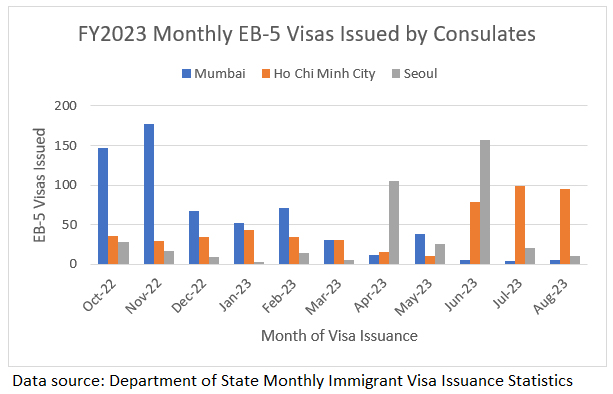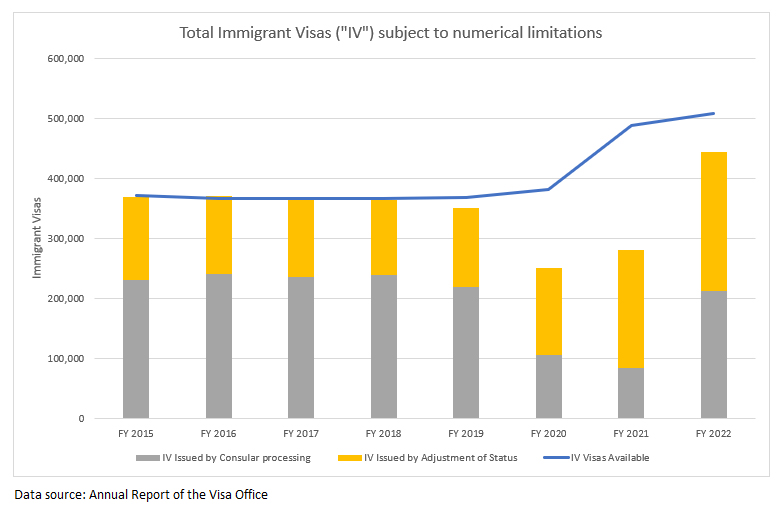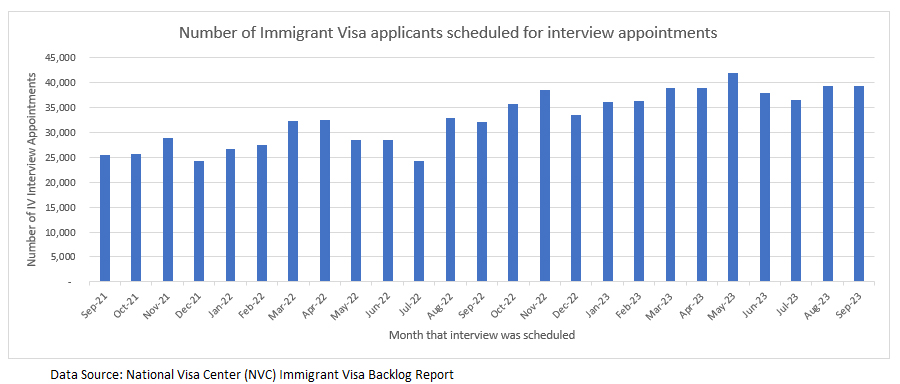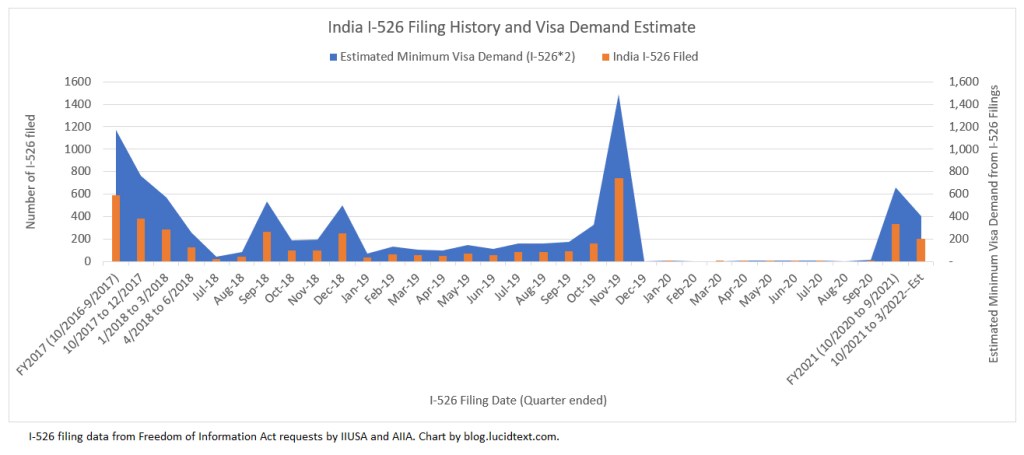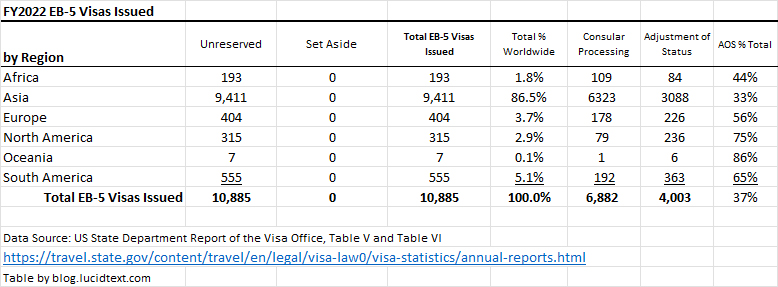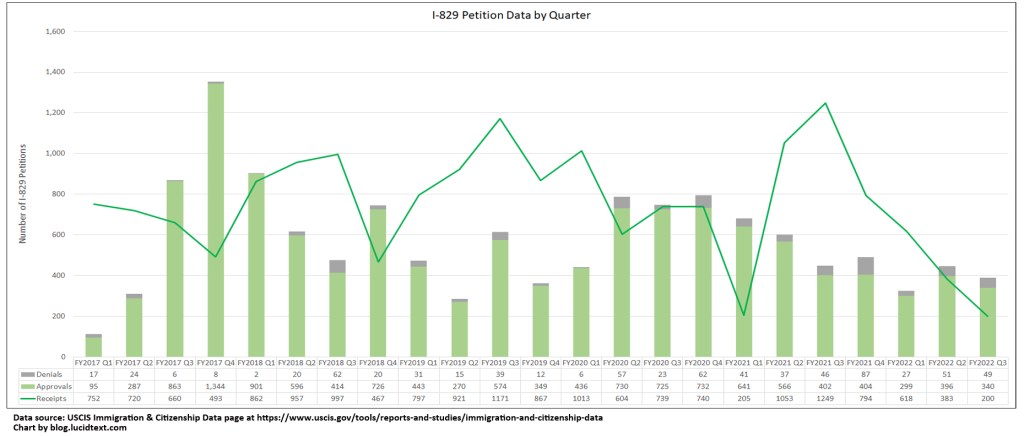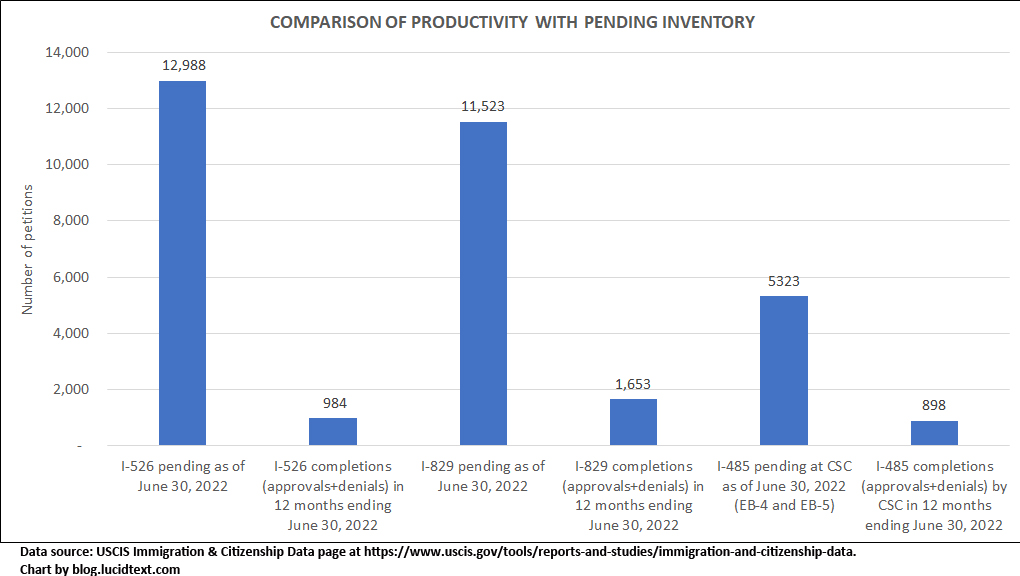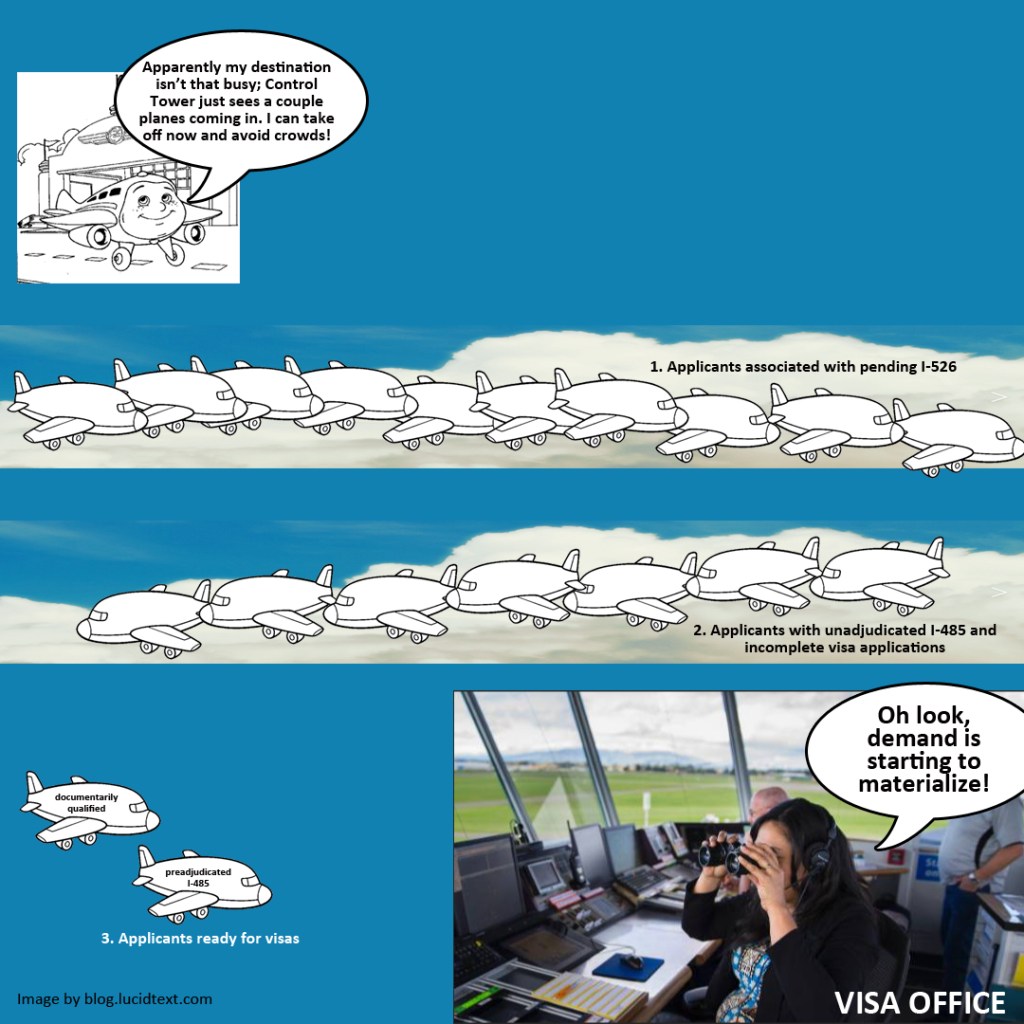USCIS Provides Additional Guidance (sustainment, termination)
October 11, 2023 1 Comment
UPDATE: This post now copies the version of the USCIS email sent out at 11:30, which seems to be a correction to the email sent at 10:45. This content is also now posted in the USCIS Newsroom.
From: U.S. Citizenship and Immigration Services <uscis@public.govdelivery.com>
Sent: Wednesday, October 11, 2023 11:39 AM
Subject: USCIS Guidance: EB-5 Reform and Integrity Act of 2022
USCIS Guidance: EB-5 Reform and Integrity Act of 2022
On Oct. 11, we issued additional guidance on our interpretation of changes to the EB-5 Immigrant Investor Program in the Immigration and Nationality Act (INA) made by the EB-5 Reform and Integrity Act of 2022 (RIA).
This guidance clarifies the required investment timeframe for EB-5 investors who file Form I-526, Immigrant Petition by Standalone Investor, or Form I-526E, Immigrant Petition by Regional Center Investor, on or after enactment of the RIA (March 15, 2022), as outlined in the RIA. This guidance also clarifies our interpretation of INA 203(b)(5)(M), regarding investors who are associated with a terminated regional center.
Background
On March 15, 2022, President Biden signed the RIA as part of the Consolidated Appropriations Act. Among other things, the RIA modified the required investment timeframes for investors who file petitions for classification Form I-526, Immigrant Petition by Standalone Investor, or Form I-526E, Immigrant Petition by Regional Center Investor, after enactment and to subsequently remove the conditions on their lawful permanent resident status. The RIA also added other provisions to the INA permitting good faith investors to maintain eligibility in the event their regional center is terminated.
For investors seeking to remove conditions on their permanent resident status under INA 216A based on an EB-5 immigrant visa petition filed on or after enactment of the RIA (post-RIA investors), the RIA removed the requirement that the investor must sustain their investment throughout their conditional residence.
The RIA also modified INA 203(b)(5)(A)(i) (the general requirement for classification to invest or be actively in the process of investing the requisite amount of capital in a new commercial enterprise) by adding new language that the investment required by INA 203(b)(5)(A)(i) must be expected to remain invested for at least two years.
Key Points
Because these changes made by the RIA, investors filing petitions for classification after enactment of the RIA no longer need to sustain their investment throughout their conditional residence, which may be many years in the future and dependent on factors outside the investor’s control, such as visa availability.
Instead, the INA now requires only that the investment must be expected to remain invested for at least two years, provided job creation requirements have been met. Although the statute does not explicitly specify when the two-year period under INA 203(b)(5)(A)(i) begins, we interpret the start date as the date the requisite amount of qualifying investment is made and believe this interpretation is consistent with the statutory language. In other words, we will use the date the investment was contributed to the new commercial enterprise and placed at risk in accordance with applicable requirements, including being made available to the job-creating entity. If invested more than two years before filing the I-526 or I-526E petition, the investment should still remain at the time the I-526 or I-526E is properly filed so we can appropriately evaluate eligibility.
Before enactment of the RIA, the termination of a regional center would have been considered a material change to eligibility for investors who had not yet obtained conditional permanent resident status and, consequently, would likely have resulted in denial or revocation of associated investor petitions. The RIA added a new provision at INA 203(b)(5)(M) that permits good faith investors associated with terminated regional centers to retain eligibility in certain circumstances. Because the statute does not explicitly specify whether it applies only to post-RIA investors or also to pre-RIA investors, we are providing guidance on how we interpret this new provision for pre-RIA investors upon regional center termination:
- We interpret INA 203(b)(5)(M) to apply to pre-RIA investors associated with a terminated regional center (or debarred new commercial enterprise or job-creating entity). However, rather than strictly applying the notification timeframes at INA 203(b)(5)(M)(ii) and (iii)(I), we will extend the deadline for pre-RIA investors to respond to a regional center termination notification until the agency adjudicates their Form I-526 petition. If needed, we may issue a Request for Evidence or Notice of Intent to Deny for the investor to establish continued eligibility.
- We may use the procedural flexibilities provided under INA 203(b)(5)(M) to extend the response deadline of 180 days for notices of continued eligibility. The extension will decrease the likelihood of operational burdens and expand the intent of the statute to permit good faith investors of terminated regional centers to retain their eligibility.
- When a regional center is terminated for purely administrative noncompliance, we may determine that the termination would generally not adversely affect a pre-RIA investor’s basic eligibility under INA 203(b)(5) (including the ability to continue to claim indirect jobs), because their investment and resulting job creation would likely remain undisturbed.
- We may choose not to extend applicable response deadlines when a regional center is terminated for substantive reasons that may affect continued eligibility of their associated investors.
More Information
For more information on the EB-5 Immigrant Investor Program or USCIS, please visit uscis.gov or follow us on Twitter, Instagram, YouTube, Facebook, and LinkedIn.






